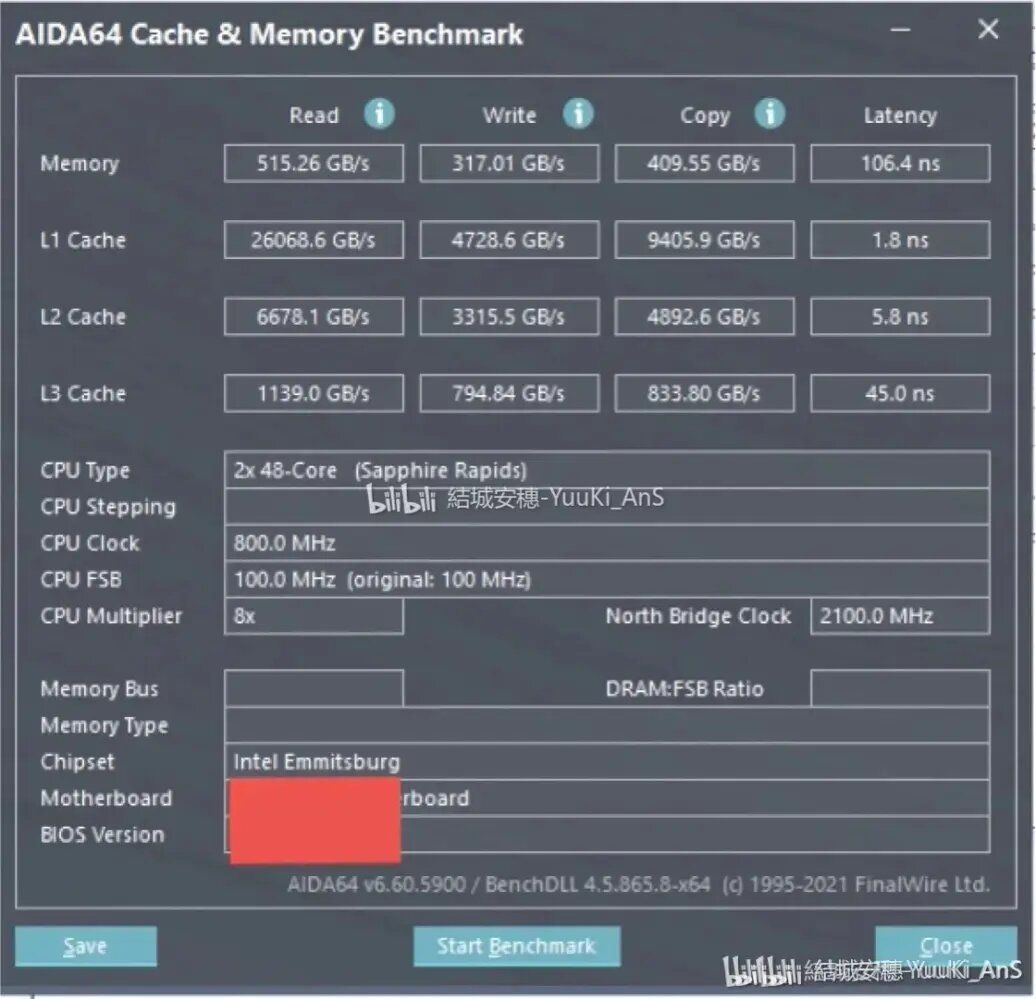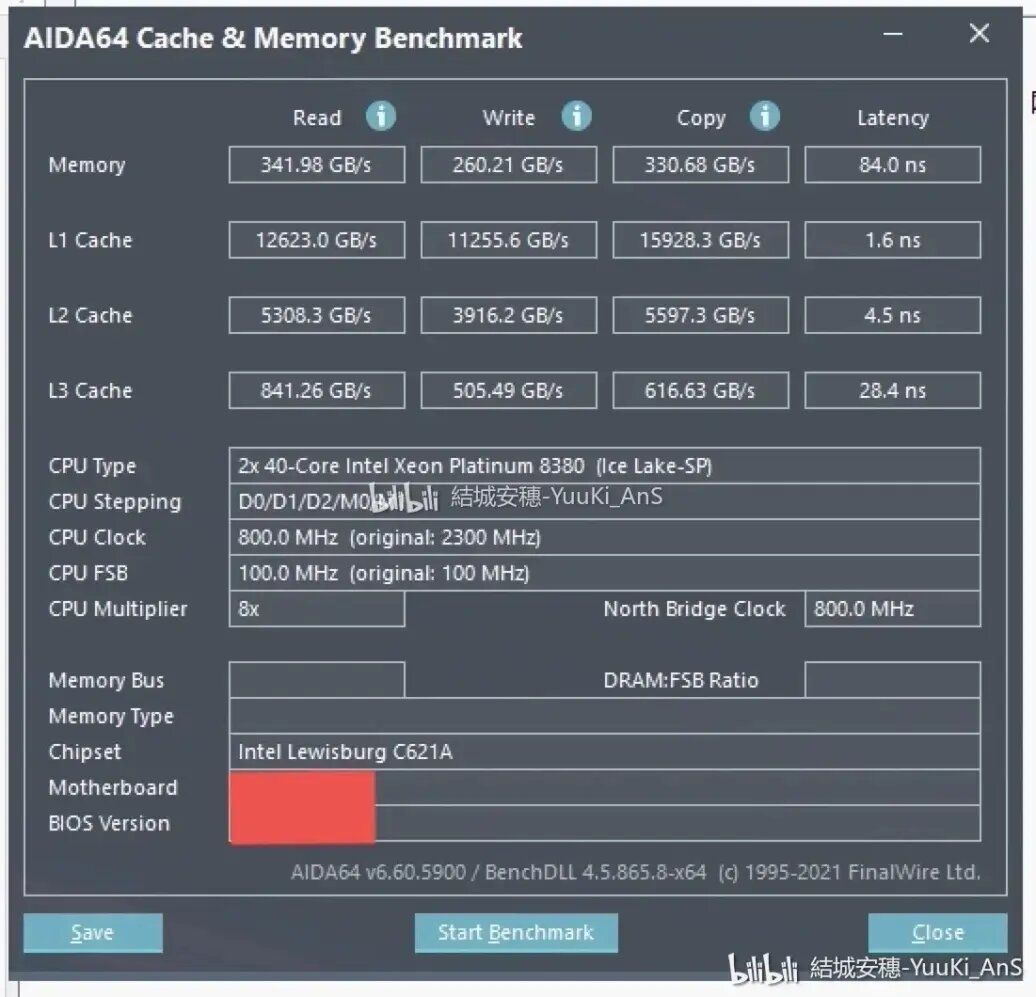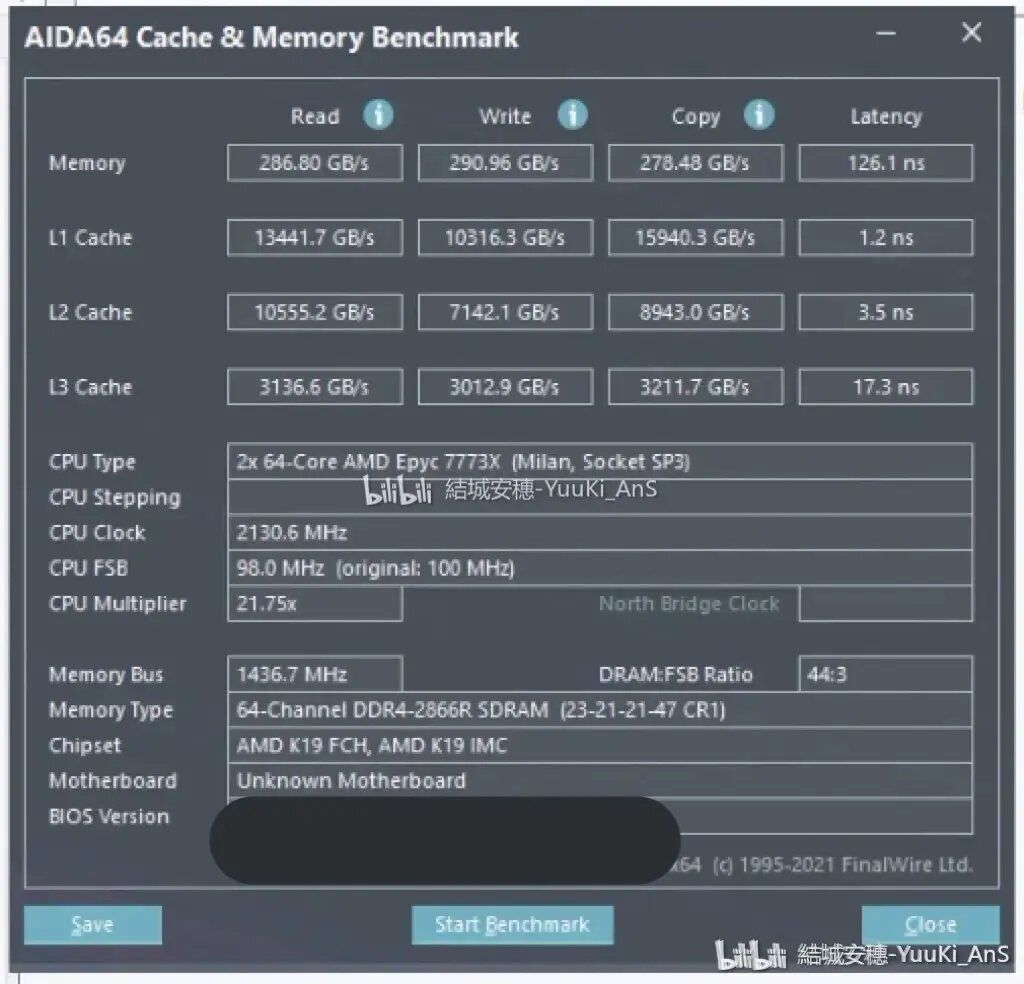Sapphire Rapids Goes Toe-to-Toe With Milan-X In An Epyc Fight
Triple threat match
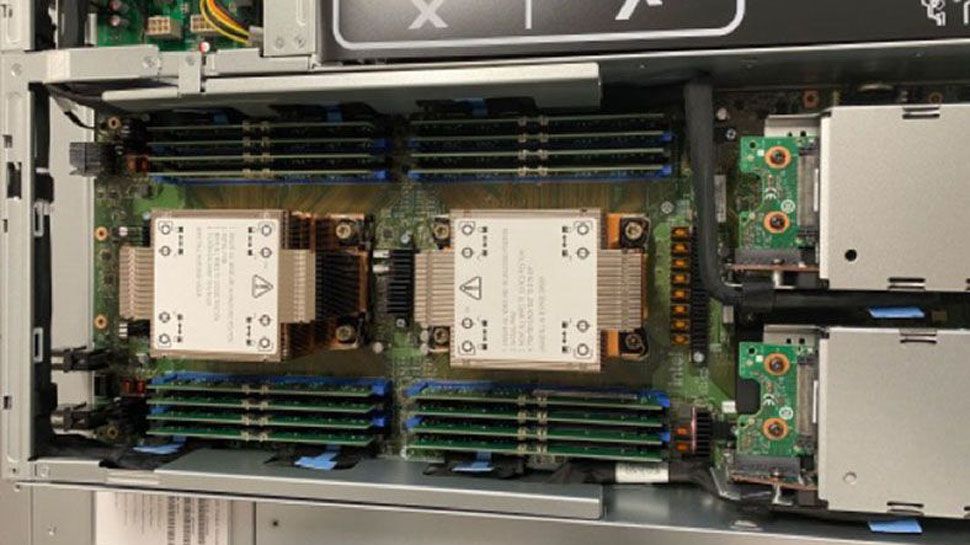
Intel's Sapphire Rapids processors will launch later this year. However, hardware leaker YuuKi AnS has given us a firsthand peak of how Sapphire Rapids fares against Intel's own Xeon Platinum 8380 (Ice Lake-SP) and AMD's EPYC 7773X (Milan-X) chips.
Sapphire Rapids has a multi-chip design with EMIB connections. The processors come out of the Intel 7 process; the chipmaker's rebranded 10nm Enhanced Superfin node. The new Xeon server chips will slot into the LGA4677 (Socket E) socket. They leverage Intel's Golden Cove cores and land on the upcoming Eagle Stream platform with PCIe 5.0 and DDR5 support. In addition, each processor has up to four Ultra Path Interconnect (UPI) 2.0 links to link up with other processors on a multi-socket motherboard. Only some SKUs will take advantage of the HBM2E memory, though.
The processor reportedly has 48 cores, 96 threads, and 90MB of L3 cache. It appears that this particular model doesn't come with HBM2E memory. The engineering sample chip, which sports the "QYFQ" Q-SPEC and D0 revision, operates with a 2.3 GHz base clock and 3.3 GHz boost clock. It has a 270W TDP and enjoys a single-core boost clock up to 3.6 GHz. The chip isn't far from Intel's flagship Sapphire Rapid SKU, which allegedly possesses 56 cores, 112 threads, 105MB of L3 cache, and a 350W TDP.
The Twitter user tested the three processors in dual-socket configurations. If we look at the total core count, the Sapphire Rapids and Xeon Platinum 8380 systems have 96 and 80 cores, respectively, whereas the EPYC 7773X system wields 128 cores. On paper, AMD's setup will strive in multi-threaded workloads as the setup has 33% and 60% more cores than the Sapphire Rapids and Ice Lake testbeds.
Intel Xeon Sapphire Rapids Benchmarks
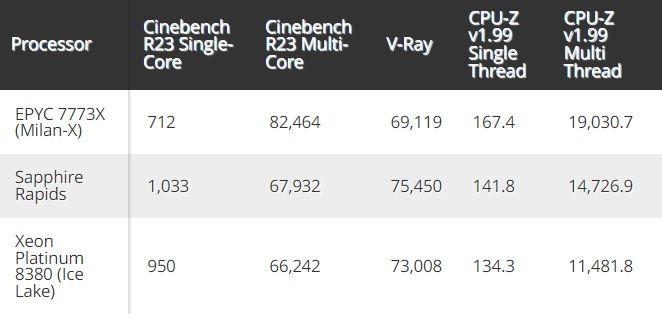
You should take the benchmarks with a pinch of salt since the Sapphire Rapids processors are engineering samples. Although the number of cores will unlikely change, the clock speeds aren't final.
Sapphire Rapids had 45% and 8% higher single-core scores than Milan-X and Ice Lake-SP, respectively, in Cinebench R23. CPU-Z v1.99 (v19.01.64) reported the opposite, though. The software showed Milan-X with an 18% single-threaded lead over Sapphire Rapids. Cinebench R23 and CPU-Z agree on the multi-threaded performance, where Milan-X excels tremendously due to the higher core count.
Regarding generation-over-generation improvements, Sapphire Rapids delivered 3% better multi-threaded performance than Ice Lake-SP in Cinebench R23 and up to 28% in CPU-Z. On the other hand, Milan-X outperformed Sapphire Rapids by 21% and 29% in the same tests.
V-Ray favored the Intel chips. However, in this specific benchmark, Sapphire Rapid and Ice Lake-SP beat Milan-X by 9% and 6%, respectively.
We're only sure that the Milan-X testbed utilized DDR4-2866 memory, a slight downgrade to the official supported DDR4-3200 standard. Unfortunately, the hardware leaker didn't specify the type of memory for the Sapphire Rapids and Ice Lake-SP systems. So, for now, we can only assume that the Intel systems were employing stock memory, which should be DDR5-4800 for Sapphire Rapids and DDR4-3200 for Ice Lake-SP.
According to the AIDA64 results, Sapphire Rapids had 80%, 9%, and 47% better memory read, write and copy performance, respectively, compared to Milan-X. Both platforms embrace eight-channel memory. In Sapphire Rapids' case, the 10nm chips exploit DDR5 memory, bringing substantial bandwidth improvements.
Latency is the only test where Ice Lake-SP outshined the other two platforms. It boasted 21% lower memory latency than Sapphire Rapids and up to 33% than Milan-X.
What you can't deny is that AMD's 3D V-Cache looks impressive in L3 benchmarks. For example, the EPYC 7773X has 768MB of L3 cache compared to the Sapphire Rapids' puny 90MB L3 system. It'll be interesting to revisit this benchmark with Intel's top Sapphire Rapids SKU with up to 64GB of HBM2E memory via 8-Hi stacks. In the meantime, Milan-X flaunted over 200% higher L3 read, write and copy performance.
Intel originally planned to unleash Sapphire Rapids in the second quarter. However, the chipmaker later adjusted its forecast for a potential third-quarter launch.
© 2025 Zeon Technology
